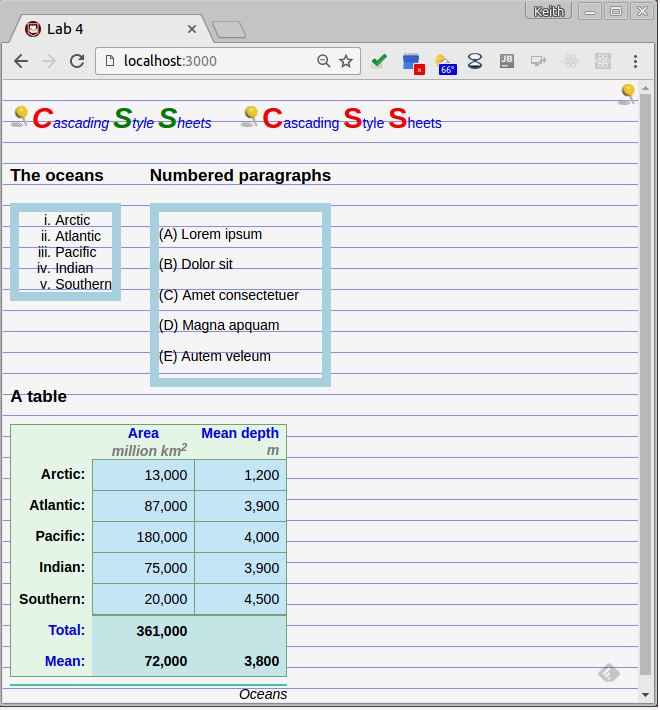
Complete this CSS tutorial*, doing the “Action” and “Challenge” exercises specified in each section. Attend to the following details for the specified step of the tutorial. Your solution should look something like the image on the right, so you’ll be able to skip some of the action sections in the later exercises. Also, feel free to experiment.
- What is CSS? — View the files using a local browser. Consider whether you need to run your own server or if you can simply load them directly.
- Why use CSS? — See the motivation for using CSS.
- How CSS works — Note that you can inspect the DOM using Chrome’s DevTools (rather than the Mozilla DOM Inspector or X-Ray Goggles).
- Cascading & Inheritance — See the cascading vs. inheritance distinction.
- Selectors — Compare and contrast and id vs. class selectors and selectors vs. pseudo-selectors. Note that you can skip the homepage link as I’ve done in the image to the right.
- Readable CSS — See the comments on CSS coding style. You can choose any appropriate style.
- Text Styles — Is Comic-Sans loaded on your system? If
so, what do you think of it?
For alternatives, consider these Font Recommendations
(for some entertaining font bashing, see the section on “Bad
Fonts”).
The example to the right uses
helvetica, arial, sans-serif(because I liked Helvetica, the movie). - Color — as written...
- Content — See the part on adding background images.
- Lists — as written...
- Boxes — as written...
- Layout — To save space, the image to the right uses float layouts to put the CSS text and the lists side-by-side. You can skip this and produce a simpler, top-to-bottom layout. We’ll look more at layout in the next unit.
- Tables — Do this as written, which means that the title of the table will be formatted as a caption, not as a (proper) title (see the sample to the right).
- Media — skip this section...
Save the final versions of your HTML and CSS files to submit for this lab.